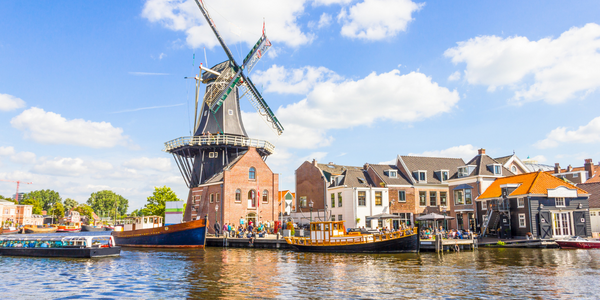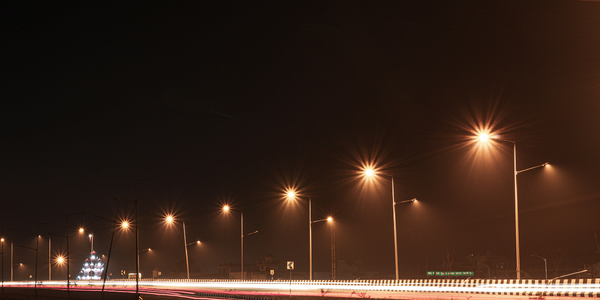Technology Category
- Infrastructure as a Service (IaaS) - Public Cloud
Applicable Industries
- Cities & Municipalities
- Transportation
Applicable Functions
- Maintenance
Use Cases
- Inventory Management
- Smart City Operations
About The Customer
The customers in this case study are the municipalities of Brockton and Dedham, located just south of the city of Boston, Massachusetts. These municipalities are responsible for managing a range of public works operations, including staffing, snow removal, maintenance, and asset management, particularly during the severe winter weather conditions that are common in the Northeastern U.S. The key individuals responsible for these operations are Pat Hill, Commissioner of Public Works for the City of Brockton, and Joe Flanagan, Director of Public Works for the Town of Dedham. They are tasked with planning, directing, and managing these operations, and have been seeking ways to improve efficiency and reduce costs.
The Challenge
The Northeastern U.S., particularly states like Massachusetts, is often hit by severe winter weather, including heavy snow, ice accumulation, and freezing temperatures. In 2022, the greater Boston area experienced four major winter storms, one of which dropped a record-setting 23.6 inches in a single day. These winter conditions pose significant challenges for municipalities in terms of staffing, snow removal, maintenance, and asset management. Pat Hill, Commissioner of Public Works for the City of Brockton, and Joe Flanagan, Director of Public Works for the Town of Dedham, are responsible for managing these operations. However, without precise information on when precipitation will start and stop, they were often left guessing when and for how long to staff crews, secure equipment, and close roadways, leading to inefficiencies and unnecessary costs.
The Solution
To overcome these challenges, the municipalities of Brockton and Dedham turned to weather intelligence provided by Tomorrow.io. This solution offers hyperlocal data, automated alerts, and actionable insights, enabling the municipalities to prepare for and streamline operations around any weather event before it happens. Tomorrow.io’s hyperlocal hourly forecast, paired with automated Insights, provides precise information on when precipitation will begin and end, allowing the municipalities to plan their actions more effectively. Furthermore, Tomorrow.io’s Weather and Climate Security Platform generates tailored insights and alerts based on the weather conditions that matter most to a particular municipality’s operations, and the actions that municipality takes to mitigate the impacts of incoming weather. This has enabled the municipalities to significantly improve resource management, reduce unnecessary overtime, and more efficiently schedule staff.
Operational Impact
Quantitative Benefit

Case Study missing?
Start adding your own!
Register with your work email and create a new case study profile for your business.
Related Case Studies.

Case Study
Turning A Stadium Into A Smart Building
Honeywell created what it called the “intelligent system” for the National Stadium in Beijing, China, turning the venue for the opening and closing events at the 2008 Summer Olympics into a “smart building.” Designed by highly controversial artist Ai Weiwei, the “Bird’s Nest” remains one of the most impressive feats of stadium architecture in the world. The 250,000 square meter structure housed more than 100,000 athletes and spectators at a time. To accommodate such capacity, China turned to Honeywell’s EBI Integrated Building Management System to create an integrated “intelligent system” for improved building security, safety and energy efficiency.
.png)
Case Study
Smart Street Light Network (Copenhagen)
Key stakeholders are taking a comprehensive approach to rethinking smart city innovation. City leaders have collaborated through partnerships involving government, research institutions and solution providers. The Copenhagen Solutions Lab is one of the leading organizations at the forefront of this movement. By bringing together manufacturers with municipal buyers, the Copenhagen Solutions Lab has catalyzed the development and deployment of next-generation smart city innovations. Copenhagen is leveraging this unique approach to accelerate the implementation of smart city solutions. One of the primary focus areas is LED street lighting.

Case Study
Airport SCADA Systems Improve Service Levels
Modern airports are one of the busiest environments on Earth and rely on process automation equipment to ensure service operators achieve their KPIs. Increasingly airport SCADA systems are being used to control all aspects of the operation and associated facilities. This is because unplanned system downtime can cost dearly, both in terms of reduced revenues and the associated loss of customer satisfaction due to inevitable travel inconvenience and disruption.

Case Study
IoT-based Fleet Intelligence Innovation
Speed to market is precious for DRVR, a rapidly growing start-up company. With a business model dependent on reliable mobile data, managers were spending their lives trying to negotiate data roaming deals with mobile network operators in different countries. And, even then, service quality was a constant concern.

Case Study
Buoy Status Monitoring with LoRa
The Netherlands are well-known for their inland waterways, canals, sluices and of course port activities. The Dutch Ministry of Infrastructure indicates that there are thousands of buoys and fixed items in and near water environments that would profit from IoT monitoring. One of the problems with buoys for example, is that they get hit by ships and the anchor cable breaks. Without connectivity, it takes quite some time to find out that something has happened with that buoy. Not to mention the costs of renting a boat to go to the buoy to fix it. Another important issue, is that there is no real-time monitoring of the buoys at this moment. Only by physically visiting the object on the water, one gains insight in its status.








